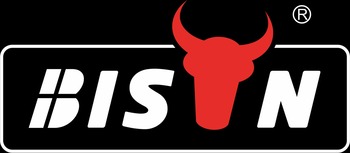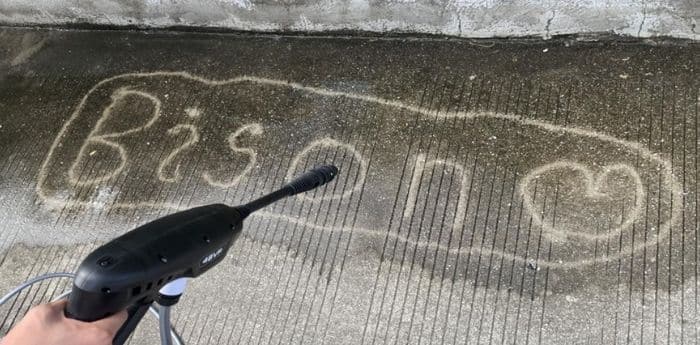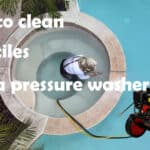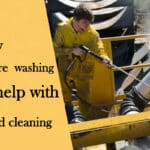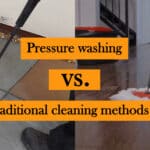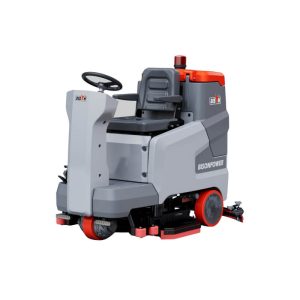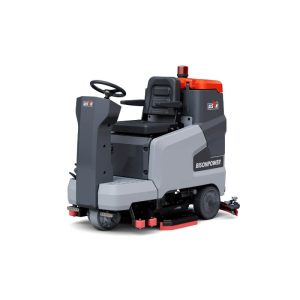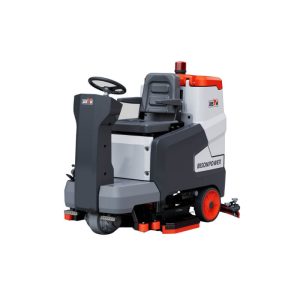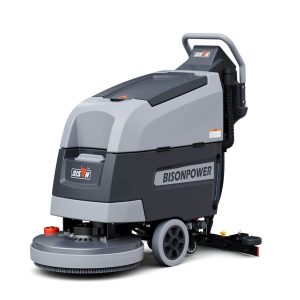
BISON Santy
Hello, I am Santy, the funder of bisonclean.com. I have been in cleaning machinery field for more than 5 years now, and the purpose of this article is to share with you the knowledge related to pressure washer from a Chinese supplier's perspective.
Table of Contents
A ride-on floor scrubber is an advanced industrial cleaning machine useful for maintaining large areas with high traffic or industrial spaces. Compared to traditional cleaning techniques, the ride-on floor scrubber allows the operator to operate the machine while sitting, ensuring that large surfaces can be cleaned faster and more conveniently, simplifying the tedious cleaning process.
So, what types of surfaces can a ride-on floor scrubber clean? In addition to general cleaning, these machines are also capable of handling a variety of hard surfaces including concrete, wood, vinyl, etc. The purpose of this blog is to examine the types of surfaces that ride-on floor scrubbers can clean and understand their versatility and applications.

Types of surfaces ride-on floor scrubbers can clean
Smooth and sealed hard surfaces
Concrete
Concrete floors, especially polished, sealed, or epoxy-coated concrete, are commonly found in industrial complexes due to their durability.
- Polished concrete requires a soft-bristled pad or non-abrasive brush, and the floor scrubber should be adjusted to medium-low pressure settings.
- Sealed concrete is suitable for alkaline cleaners used to remove heavy stains with a medium-hard brush, and regular cleaning can prevent its sealant from deteriorating.
- When cleaning epoxy-coated concrete, the ride-on floor scrubber should be adjusted to medium-low pressure settings, and careful attention should be paid to chemical compatibility and non-reactive cleaning solutions.
Vinyl composite tile (VCT)
VCT floors are common in schools, hospitals, and other high-traffic areas, but they can quickly become dirty due to foot traffic and objects falling on them, so proper maintenance is essential to avoid peeling and edge lifting. This surface requires a ride-on floor scrubber equipped with a soft scrubbing pad and mild detergent to help maintain the surface finish and protect the integrity of the tile.
Terrazzo
Terrazzo floors are a composite material known for their durability and beauty and are common in upscale retail environments and office lobbies. These surfaces require carefully controlled pressure when cleaning to prevent scratching. Soft brushes and neutral pH cleaning solutions are ideal for maintaining their polished surface.
Ceramic and porcelain tile
Tile is commonly found in commercial kitchens or bathrooms. In order to solve the problem of oil residue or stain accumulation, it is very useful to use a ride-on floor scrubber for cleaning. The high-speed brush plate quickly flushes and the wastewater collection of the vacuum recovery system directly restores the tile to its original appearance, while allowing the site to dry quickly, reducing the risk of injury.
When cleaning, adding the appropriate cleaning solution to the floor scrubber can also prevent grout discoloration and maintain the overall appearance of the tile.
Laminate
Laminate surfaces in light commercial areas require careful cleaning to avoid moisture damage and wear. A gentle approach using a soft pad and waterless detergent can protect laminate floors without compromising their structure.
Epoxy coating
Epoxy-coated floors are commonly used in industrial buildings and are standard for heavy-duty applications. Regular cleaning with a ride-on floor scrubber helps maintain its durability and glossiness. It is suitable for medium-pressure cleaning, and regular cleaning can maintain its non-slip properties.
Textured and uneven hard surfaces
Bricks and paving slabs
Textured surfaces such as bricks and paving slabs require a lot of effort to clean manually due to their irregular texture, which can accumulate dirt and debris. A ride-on floor scrubber equipped with a high-speed scrubbing brush (cylindrical brush or disc brush) can quickly brush out the debris accumulation in the joints. Using the appropriate cleaning solution ensures deeper dirt penetration, even if the gaps are as smooth as new.
Rough concrete
Outdoor or unfinished concrete surfaces often harbor dirt. Heavy-duty brushes and increased water/detergent volumes help a ride-on floor scrubber remove stubborn debris, but very rough areas may require multiple washes.
Grout lines
Grout lines are easily deteriorated and damaged by harsh chemicals during the cleaning process. A ride-on floor scrubber equipped with targeted brush technology and a mild cleaning solution should be used to remove embedded dirt while maintaining the integrity of the grout lines.
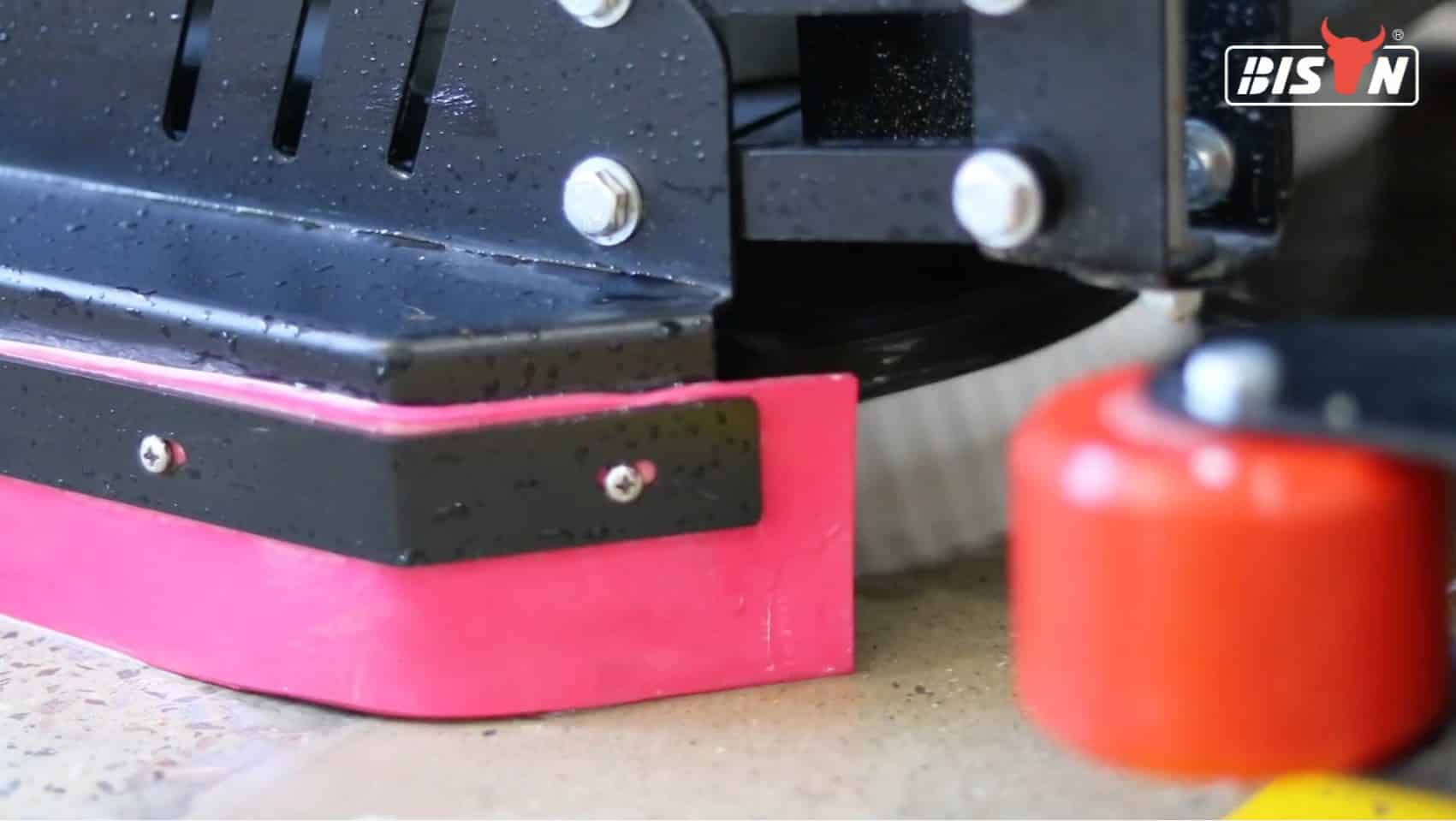
Surfaces where ride-on floor scrubbers are not recommended and precautions
Recommended and precautions
Unsealed wood floors
Unsealed wood floors are prone to warping, discoloration, and swelling when exposed to water. Ride-on floor scrubbers use water and high-speed brushes during the cleaning process, which can cause irreversible damage to these surfaces. Unsealed wood floors are best cleaned with a dry mop or a dedicated vacuum cleaner.
Very delicate surfaces
Certain types of delicate surfaces, including antiques or exotic materials with fragile coatings (such as hand-painted tile or aged marble), are not suitable for floor scrubbers. The pressure, scrubbing intensity, and cleaning agents used by ride-on floor scrubbers can cause direct physical damage, and manual cleaning is best for safety reasons.
Anti-static/ESD floors
Electrostatic Discharge (ESD) floors are commonly found in manufacturing environments, data centers, and electronics labs, and require specialized cleaning methods and certified anti-static cleaning agents. Ride-on floor scrubbers must have low speed, anti-static wheels/brushes, grounding systems, and specialized mat materials. BISON recommends that you do not use a floor scrubber without confirming its qualifications.
Precautions
Pre-cleaning preparation
- Before operating a ride-on floor scrubber, inspect the surface for damage and remove large loose debris or obstructions.
- Adjust floor scrubber settings, select the correct brush type, and configure the speed, pressure, and cleaning solution for the surface type.
Food processing facilities
Ride-on floor scrubbers used in food processing facilities must meet sanitation standards and use FDA-approved cleaning solutions to prevent contamination. Operators should also take additional disinfection procedures to prevent cross-contamination.
Outdoor surfaces
BISON ride-on floor scrubbers are an excellent choice for outdoor areas such as parking lots, sidewalks, and patios. However, outdoor cleaning presents unique challenges, including uneven terrain, heavy debris, and inclined uphill and downhill slopes. When purchasing a floor scrubber, look for sturdy tires, durable brushes, and enough power to effectively handle these environments. Additionally, the operator should be trained to consider the effects of water runoff and use environmentally safe cleaning agents.
Conclusion
A ride-on floor scrubber is a versatile and efficient cleaning machine. Fully understanding the types of surfaces a floor scrubber can clean and matching the machine’s settings to each material ensures efficient cleaning and extends the life of the floor. Understanding these nuances helps operators maximize results while avoiding damage to the machine or the floor.
Are you interested? Contact BISON today to get the BISON ride-on floor scrubber product brochure. As a well-known floor scrubber supplier in China, BISON offers a rich product line with cutting-edge technology and strictly controlled factory quality.
FAQs about what types of surfaces can ride-on floor scrubbers clean
Yes, floor scrubbers are generally more water-efficient than manual scrubbing for cleaning large areas. BISON floor scrubbers have water adjustment settings that allow you to choose the cleaning speed based on the floor surface, faster for clean surfaces and less water, slower for dirty surfaces and more water.
Ride-on floor scrubbers are efficient and suitable for larger areas, while walk-behind floor scrubbers are more suitable for smaller, more obstructed spaces. If you need to know more about the difference, please check out “walk-behind vs ride-on floor scrubber“.
Yes, many modern models have environmentally friendly options such as water-saving and energy-saving settings. The BISON floor scrubber has a water adjustment setting, which allows you to select a cleaning speed based on the floor surface, with faster speeds and less water use for clean surfaces and slower speeds and more water use for dirty surfaces.
You might also enjoy
Questions?
Contact Us Today.
Related Products
Find more?
Related Posts
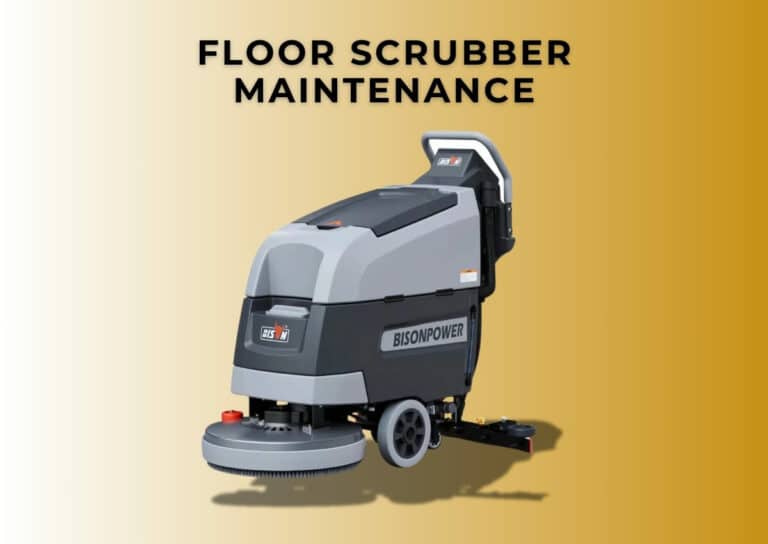
Floor scrubber maintenance: Extending equipment life
This article explains how to maintain a floor scrubber, including daily, weekly, and monthly maintenance procedures, common problems, and troubleshooting.
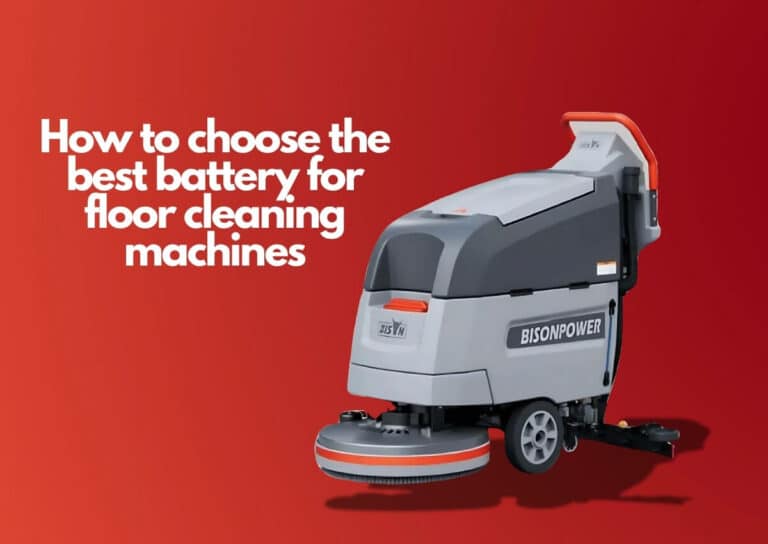
How to choose the best battery for floor cleaning machines
This blog aims to guide readers in choosing the best battery for their floor cleaning machines, ensuring optimal functionality and improved operational outcomes
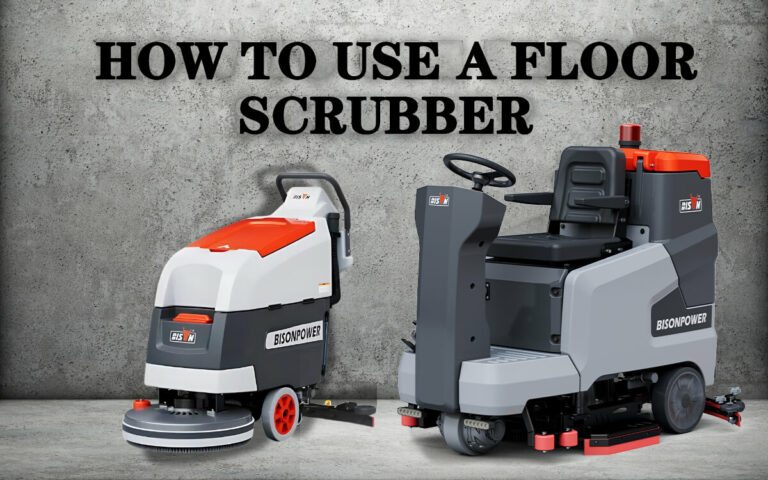
How to use a floor scrubber
In this comprehensive guide, BISON will walk you through everything you need to know about how to use a floor scrubber effectively
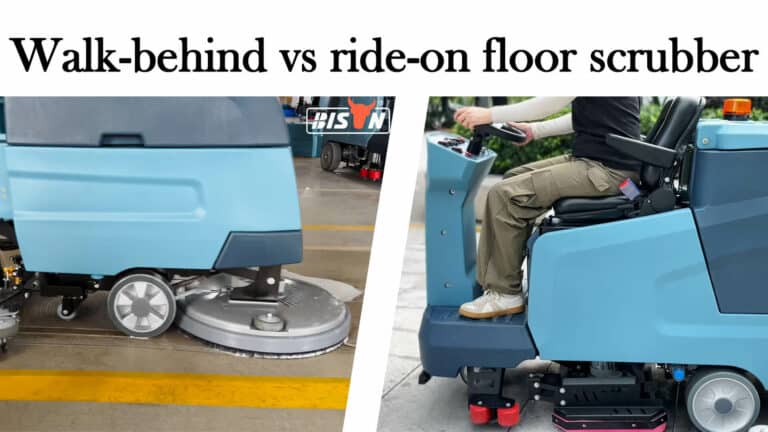
Walk-behind vs ride-on floor scrubber
This blog will compare walk-behind and ride-on floor scrubbers from the aspects of Performance factors, operating considerations, Cost analysis, etc.
